An interview with Piere Rodriguez-Aliaga
Posted by Mariana De Niz, on 9 May 2023
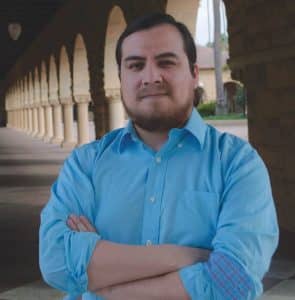
MiniBio: Dr. Piere Rodriguez-Aliaga is currently a postdoctoral fellow at Stanford University, where he uses biochemical and single-molecule techniques to study protein misfolding and aggregation. He began his career in Lima, Peru. He began as a research technician at Universidad Cayetano Heredia, working on an ecology project aiming to better understand endemic and introduced populations of rodents and their effects on the fox population in the Andes mountainous region. He then worked on Bioinformatics and Molecular Biology, where he identified genes relevant to antibiotic resistance in M. tuberculosis. Later in his undergraduate degree, he started working on single-molecule tools, and he became the AFM responsible in Peru, when it was one of just a few instruments in South America. During this time he was a visiting scholar at the University of Parma in Italy. He did his PhD at the University of Berkeley, in the lab of Peruvian scientist Carlos Bustamante. During this time, Piere gained expertise in multiple single-molecule techniques to study molecular motors and protein folding. For his work and potential as future independent investigator, he has received the Exceptional scholar award from Rockefeller University, he is a fellow of the Hereditary Disease Foundation and of the Intersections in Science Program.
What inspired you to become a scientist?
I think my story might be similar to that of many scientists: I was already very curious since I was a young child. I was born in Peru, in a city called Huancayo at the Peruvian Andes. There are no scientists in my family. My father is an economist and a lawyer, and my mother is a psychologist. Despite this, science was very present during my upbringing – we had access to documentaries and books, we would discuss science during dinner with my parents and my other relatives. My father loved reading about science, and this made me curious about it too. Huancayo is also a middle-sized city, but in the suburbs there is a lot of vegetation – one can be in touch with nature. I would wonder for example why some toads have moist skin, and why some worms can live inside the soil. We had access to TV shows like Beakman’s World or Discovery Kids – they did experiments which one can repeat at home, and in fact I did this a few times. I remember also – I must have been 10 years old or so, in 3rd or 4th grade of primary school, and I was at a kid’s party. We were lined up and we had to say what we wanted to become later in life. The majority of kids wanted to be teachers or firefighters. I said I wanted to be a physicist or astrophysicist and to have my own chicken farm and restaurant, because I love ‘pollo a la brasa’. It was very clear to me that I wanted to be a scientist. Once I started high school and was able to study Physics and Chemistry in more depth, I knew this is what I wanted to do. I was never top of the class, but I did well in school in general. Eventually, when the time came to search for undergraduate degrees, I heard about a University in Lima, the most prestigious for Medicine and Biomedical sciences in Peru – called Universidad Cayetano Heredia. When I told my parents I wanted to apply to this university, to study Biology and become a scientist, they gave me their unconditional support. This is relatively uncommon: I have many friends who have also wanted to become scientists, who were not supported by their families because in Peru the support to science was almost non-existent back in the day (and still faces major challenges nowadays). So anyone who studied Biology or Chemistry or Physics ended up becoming a teacher at a school, and this was not really my aim. My goal was to work at a lab and make new discoveries. In summary, my interest for science was very natural – I was a curious child, I liked science from an early age, and was lucky to have my family’s support to pursue this career.
You have a career-long involvement in biophysics and microscopy. Can you tell us a bit about what inspired you to choose this path?
The focus of my research is understanding molecular mechanisms of biomolecules – DNA, proteins, molecular motors – using a technology that allows to study single molecules. You study one molecule at a time. When I joined Universidad Cayetano Heredia, I studied Biology as an undergraduate, and as I progressed, I was able to specialize in Molecular Biology. One strength of the University is molecular biology of parasites like Leishmania, malaria, etc. It’s a world-renowned institution for this topic. I started my undergrad in March 2004, and thanks to some contacts I had at UCH, I was able to start working at a lab since the first semester. They were working on vertebrate zoology – rodent taxonomy – they used ecological and molecular tools. For me it was a dream come true to be able to join a lab at this point. I started cleaning mouse cages in the basement of the labs. That was my (unpaid) job for the first 3 or 4 months. It was summer time in Lima, so it was super warm – this together with the mixture of smells and sweat…well, you really have to be motivated to be able to do it. Moreover, I lived in a district called Miraflores, in the south of Lima, and the University is at the north of Lima. It was a 1-hour trip – so during my summer holiday instead of going to the beach, I was crossing Lima to clean mouse poo, and afterwards I would be able to go upstairs to the lab and listen to the scientific discussions of the other team members. This was my pay. I think this was like a test for me. After 4 months I wasn’t just cleaning mouse poo, but now I was also in charge of cleaning glassware. And then after about a year I was assigned to a project which involved using a microscope to analyze fox feces, to determine what foxes were eating. I had to wear a mask and with small tweezers, separate the bones and different components of the feces. I also had to present my findings to the lab, at which point my PI asked me to classify the bones I had isolated from the feces, to determine what organism and what species they belonged to. Are they rats, common mice, or wild mice from the area – or from different areas. He gave me a book with all the characterized rodent species of the region, which included pictures of the mandibles, teeth and other bones. I had to use this as a basis for the characterization of my own findings. I did this for about 1 year. So it was a fascinating time. In my 2nd year, there was an open call from Emory University, which is a main collaborator of Universidad Cayetano Heredia. There was a 10,000 USD surplus and so they opened a call for project proposals from undergraduate students. They were able to fund up to 5 projects, so my professors, Oswaldo Ramirez and Margarita Arana encouraged me to apply. I was the youngest among all applicants, but I was amongst the awardees. The project involved traveling to the mountain range in Lima to catch mice in the small remote towns and villages in the vicinity of Lima. The aim was to explore how introduced rodents (mice and rats) interacted with rodents endemic to the Andes. We had to capture mice and take samples to see whether they were reservoirs for diseases such as Leishmania and Bartonella. That was my first grant ever – for me 2000 USD was a huge amount of money for my project. This project took 2 years to be completed. By the time I was in the 4th year of my undergraduate degree, as I understood more about molecular biology, I felt the work I had been doing was more descriptive and ecology-oriented. At this point I felt my interests had changed, and I was more keen on learning more about molecular biology. To this end, I obtained a grant from my university to get trained in molecular biology tools in the USDA institute in Fresno, California in 2008. This was a unique experience where I learned a lot, things that I still apply in my work. After three months, I returned to Peru. A professor of the course of Bioinformatics, whose name is Mirko Zimic taught us about genes in tuberculosis. As part of his class, I identified a few genes that Prof. Zimic was interested in studying. They were important in the context of antibiotic resistance – linked to pumps that prevent antibiotic uptake by the bacteria. He invited me to carry out this project in his lab, where we would mutate those genes and investigate their effect. This allowed me to apply the molecular biology skills I had recently acquired in USA. It was a difficult project, with difficult methodology, and limited funding. Unfortunately we didn’t see any phenotype. Around that time I finished my undergraduate degree after 5 years. Around this time, in 2009, Dr. Carlos Bustamante, whose lab in Berkeley is a world-leading lab in the topic of single molecule analysis, decided to establish a ‘twin lab’ in Peru. He is Peruvian, and he wanted to support the country’s research in this way, establishing lab parallel to the one he leads in Berkeley with similar equipment. The main focus of the lab was molecular biophysics, and was equipped with an atomic force microscope (AFM) and optical tweezers, which was the first in Latin America. I’ll always remember it was the 4th of January of 2009 when I met Carlos Bustamante. I went to Cayetano, and Carlos was there – the lab had nothing yet, only a blackboard and some chairs. I told Carlos about my background and that I was interested in joining his lab. I was amazed by his humility and kindness – and he accepted me immediately in his lab. During that summer, I worked in both labs –still finishing up my project with Mirko Zimic. Carlos brought his team from Berkeley with him, to train us in the use of these sophisticated techniques (AFM and optical tweezers). We were 6 students, all fresh from undergrad. I learned AFM in one week – it was a very quick training. One of the first things we looked at was DNA to see if the microscope was functioning well, and eventually we got to work with it more extensively. After mastering its use, Carlos and Daniel Guerra (who managed the lab in Peru) offered me the chance to be in charge of the AFM microscope in Peru. This was a huge responsibility, and I was super excited to assume this role. The lab didn’t have grants yet – all the work was funded by donations at that point. We had about 20 cantilevers that were precious, because we didn’t have more! We had to generate enough results with this, to be able to apply for grants. Once we had standardized all the protocols and I was able to see DNA routinely, I worked on a project where our aim was to investigate the interaction of DNA with RNA polymerase in E. coliand M. tuberculosis. We managed to characterize this successfully, noticing there was a significant conformational change in DNA upon this interaction with RNA polymerase. With this work we started obtaining grants. At the end of 2009, with the experience I had acquired on this microscope, I considered doing a masters degree in Germany or in the Netherlands. I was interested in joining Utrecht University in the Netherlands, and the Max Planck in Germany. At this point I hadn’t considered applying to universities in the USA – I thought I was not good enough to be accepted for a PhD in a top University. I spoke to Carlos and asked him for his recommendation letter to apply to Germany and the Netherlands, and he asked me why I didn’t consider applying to Berkeley and make a PhD in Biophysics in his lab in California. I thought he was joking – I had no published papers and I didn’t feel I had what it took to even apply to such place. Anyway, in the end he convinced me, and I had to prepare to take the GRE and the TOEFL tests. While most applicants take years to prepare for these tests, I only had two months. In the end, I did well in these tests and submitted my application by December 2009. In parallel, Carlos had started a collaboration with colleagues in Parma, Italy. As part of this collaboration, I went to Italy in January of 2010 to analyze the RNA polymerase of tuberculosis with AFM, and to work on another project to see how a molecule called PPGPP changed the conformation of a transcription complex in E. coli. While I was in Italy, on February 2010 I received an email from Berkeley telling me that I had been accepted to the Biophysics PhD program in Berkeley. This was a dream come true. I went to check the pages of the Berkeley PhD alumni and there had been no Latin American graduates. When I came back to Peru, we had obtained various results that were worth of publication in a high-impact journal. I started my PhD in Berkeley in August 2010, and I graduated in December 2016 – it was 6.5 years. It was a very challenging experience, but I had a lot fun and learned a lot, thanks in big part to Rodrigo Maillard, who was a postdoc and my mentor during my first three years. At the beginning I had a typical case of imposter syndrome, but then I started to publish and gain confidence. My main PhD paper was highlighted in the cover of NSMB. When I finished my PhD, I applied to five postdoc positions in different parts of the world. I decided on Stanford, with Judith Frydman. I chose her lab because of the interdisciplinarity. Her work focuses on protein folding using several techniques. The goal of my postdoc was to expand my skills. And now my end goal is to become a PI – to have my own lab and study proteins (like Huntingtin) that are linked to neurodegenerative diseases using optical tweezers, and many other molecular and imaging techniques I’ve learned during my career path. I don’t yet know if I will go back to Peru – from an economic point of view a lot has improved, and there is a lot more labs now than when I studied there. But I still feel that the support to science, especially basic science which is what I do, is insufficient. It’s also more expensive to do science in Latin America than in the USA. My hope, however, is to not lose connection with Latin America – I have close relationships with many colleagues in Chile, Argentina, Peru and other countries. I want to give back the support they all have given me to become a scientist and contribute to have more biophysicists in the region.
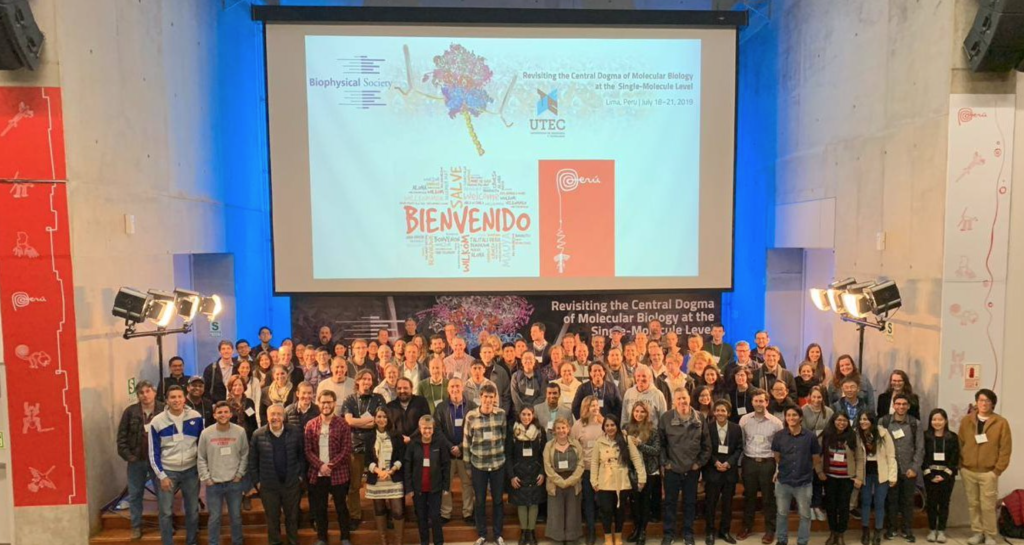
Can you tell us a bit about what you have found uniquely positive about becoming a researcher in Peru, from your education years?
Scarcity is something that many Latin American scientists have in common. I think this leads us to become very resourceful. It makes you better at problem solving. This wasn’t easy, but in hindsight it’s valuable. Resilience is the main word I can think of in the context of this question.
Can you tell us a bit about your day-to-day work as a researcher at Stanford University?
As any scientist, some weeks are very intense, some are a bit easier. But in general I plan and carry out my experiments, purify proteins – which takes all day, meet with my supervisor, and perform biochemical assays. But most of my time is spent analyzing data and the results from the experiments. That’s pretty much what I do.
Did you have many opportunities to interact with other Latin American groups, outside of Peru?
Yes! I have worked with teams in Chile – this all started at a meeting back in 2013 in South Chile – with a PI who studies knots in proteins. It was not clear what their biological role was, so we decided to combine our expertise to find out what happens when molecular motors interact with those knots. We were able to publish together the first experimental evidence that links these knots with a function. I’ve also given invited talks in Argentina, Peru, Puerto Rico. Importantly, in 2019 with friends from Argentina, Chile, and Peru we organized a meeting, supported by the Biophysical Society from the USA, in Lima. It was the first meeting of its type ever held in Latin America. We invited world leaders in the field, as well as students from all over Latin America. 30 students received scholarships to attend. So it brought together many biophysicists in Latin America. The Biophysical Society was very happy with the outcome and has remained interested in supporting future similar meetings in South America. There were plans for a meeting in Argentina but the pandemic has delayed all these plans. Hopefully we can continue organizing more of these meetings changing location every year, to bring together biophysicists in the region. I’ve also been involved in a program called Cientifico Latino, where I’ve mentored Latin American students in their PhD applications to the USA.
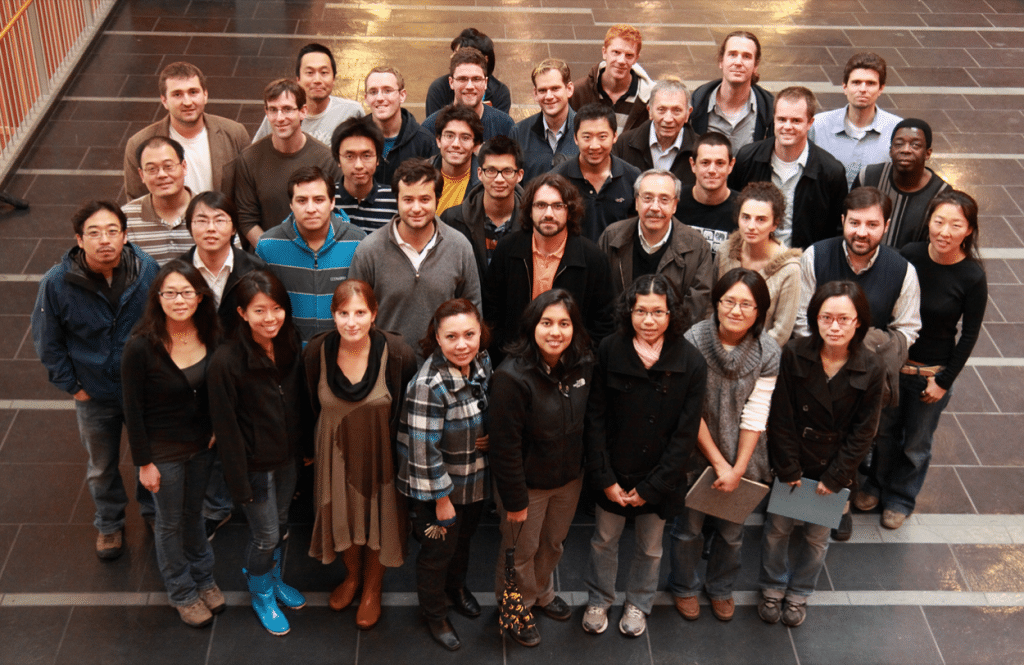
Who are your scientific role models (both Peruvian and foreign)?
Carlos Bustamante is one. I was fortunate enough to work with him very closely, and see first-hand how he combines his genius with persistence and trust in his people to produce amazing scientific stories. His work has so much impact in the world that it has been used as the basis for the Nobel Prize to the optical tweezers in 2008. In Cayetano Heredia, Jorge Arevalo and Abraham Vaisberg taught me (through his classes) how to present, how to critic an article, and how to think like a scientist. In Berkeley, Andreas Martin was my unofficial PhD advisor, who shared with me his expertise and friendly guidance, always with a balance of rigor and fun. Historically, I believe Michael Faraday is my scientific hero. He had no formal education, had little resources – he was an assistant of someone else, and in this position he started learning on his own. He was tenacious and consistent. From there, he started doing discoveries on electromagnetism, which now governs a lot in our lives. I think this is admirable.
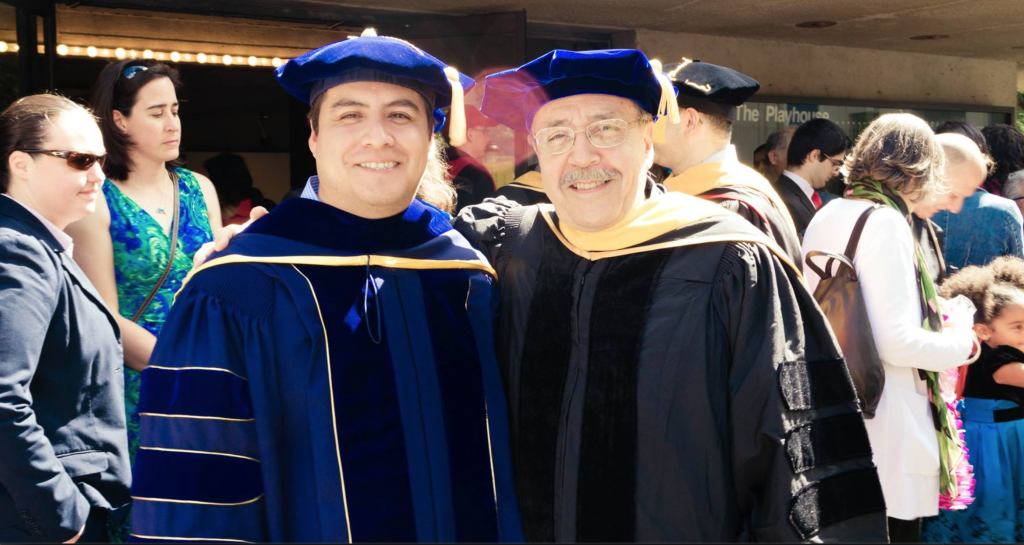
What is your opinion on gender balance in Peru, given current initiatives in the country to address this important issue. How has this impacted your career?
I think that the gender gap in science is still significant. In some fields the gap is more pronounced. For example in biophysics and physics, it’s clear that there is a huge gap – women are under-represented. In biology the gap is not as huge. In Peru, for example, in the degree of Biology, the majority of students were women. However, once you start specializing, the majority of women tend to go to fields of Ecology or Biomedicine, rather than Molecular Biology, at least that was the trend when I was a student. In the USA too, there is an under-representation of women in Mathematics and Physics and Biophysics. I think we should do more to close this gap, already at earlier ages. There’s a great program in Peru focused on this called MacTec, which brings professional scientists to speak with school-level girls and organize experiments, to convince them they can also be engineers, computer scientists and astrophysicists, just the same as men. This program is amazing. I think there should be gender balance, but as everything in life, without any exaggeration. I have now worked with men and women leaders, and I have a great relationship with my current PI, Judith, – she’s Argentinian, she loves football (fan of River Plate), and one key difference I see between her and my previous advisors is definitely the more caring nature – she worries about our wellbeing. I was once sick, and she was super supportive and understanding during this difficult time for me.
Are there any historical events in Peru that you feel have impacted the research landscape of the country to this day?
The scientific potential in Peru has never been reached and is still on slow development. There are individual scientists who have been outstanding, prominent figures in the world, but support to science has never been great. The scientific system of Peru is and has always been far from optimal. Perhaps in Uruguay, Argentina and Chile, the change was more notorious – i.e. science during the dictatorship versus science in the post-dictatorship years. In Peru, during Fujimori’s regime the scientific system was almost nonexistent. In the years post-Fujimori, funding for science improved very slowly through loans from the BID, but nothing radical has occured. Progress has been done, especially in the last 10 years, but it is still too slow compared to the rate at which neighboring countries are improving their scientific systems. Radical reforms and significantly more funding are required in Peru, but not a Ministry of Science. What I’ve seen is that Peru’s research is starting to make the most of its geographical location – for instance, there is a lot of research on biology and health at high altitudes – we have the Andes here. We also do a lot of research on parasitology and other infectious diseases. Peru is one of the countries with highest prevalence of tuberculosis, globally, and is often seen as a world model on how to approach tuberculosis treatment, and other diseases like malaria, chagas, or leishmania. So all this influences the range of topics Peru now prioritizes. But going back to your question, I think there’s no clear difference between say, science under Fujimori’s or Alan Garcia’s regimes compared to the others. In social sciences definitely- after Fujimori there have been revolutionary changes on the topic of human rights, but in exact sciences I don’t think so.
Have you faced any challenges as a foreigner if you have worked outside Peru?
I’ve always been well received in the USA, and other countries I have lived in. I have now lived more years in California than in Lima. My only criticism is the US migratory system. Right now for instance I’m getting my green card, and I had to hire a lawyer, it’s super complicated. It should be easier for people who have been working here for a long time and shown productivity. Other than this, while I miss Peru a lot, I’m super happy to live in the US. My son was born here and we are very happy here.
What is your favorite type of microscopy and why?
Anything that allows you to image or manipulate biomolecules at the single-molecule level! I am very fond of AFM of course, because it was my very first tool. Optical tweezers as well – in my opinion it’s a tool that allows you to get information on molecules by touching them. I still feel experiments with optical tweezers are like science fiction, using lasers to manipulate matter, like in Star Trek. With this approach you analyze molecules from a totally different perspective to traditional microscopy methods.
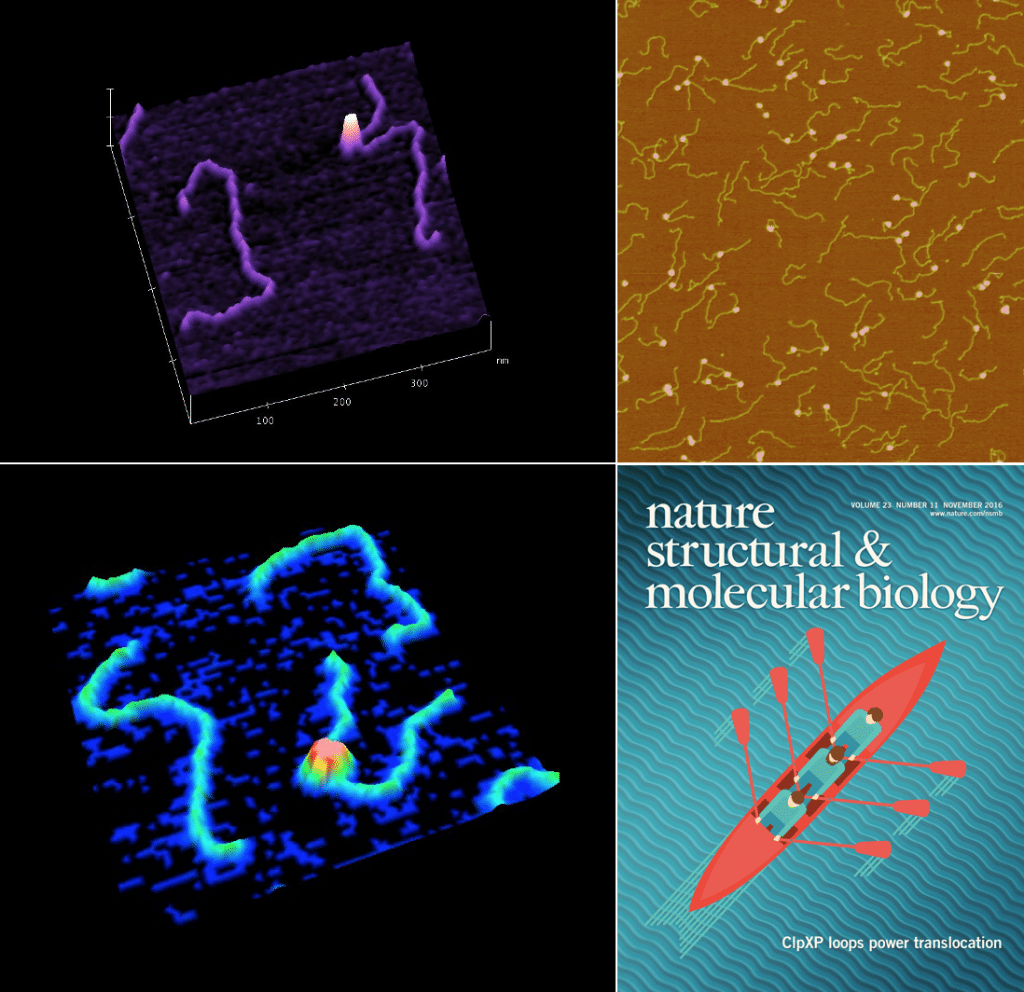
What is the most extraordinary thing you have seen by microscopy? An eureka moment for you?
To be able to observe a single molecule doing it’s work. It’s like science fiction that we are to analyze ONE molecule per experiment. Seeing a translocase in action, using optical tweezers, and being able to measure its force, it’s fantastic. Also, when I was in Italy working on PPGPP, and we saw it interacting with RNA polymerase, and changing its conformation – this was fascinating. It had never been described. For a few minutes I was the only person to know this! There have been other eureka moments, like when I identified (for the first time) how disease-causing mutations alter the conformation of the huntingtin protein during my postdoc, but this one in Italy I am most fond of because it was totally unexpected.
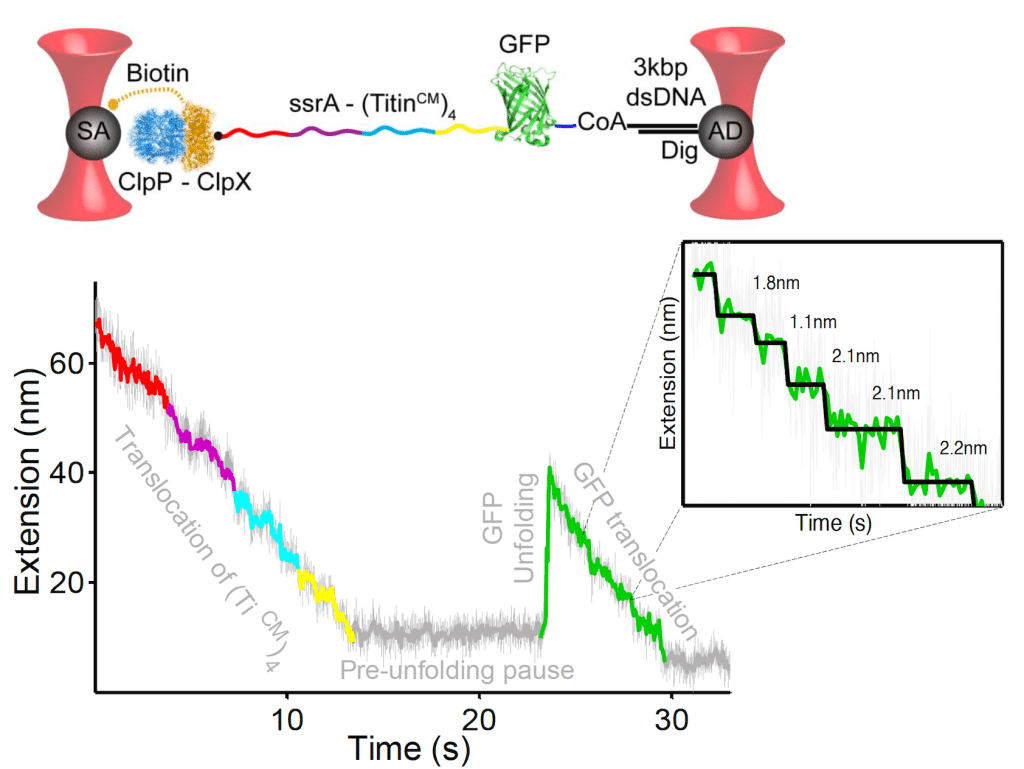
What is an important piece of advice you would give to future Peruvian scientists? and especially those specializing as microscopists?
Two things: based on my experience, believe in yourselves, and apply to everything you are interested in. I think in Latin America we tend to have huge imposter syndrome (as I had at the beginning of my PhD) and we think that our background won’t be good enough. This is not true. Once you get to work abroad, you see we’re all at similar levels. So don’t underestimate yourselves. Talent is equally distributed in the world; all that is needed is an opportunity. The other piece of advice is one I received from Ignacio Tinoco Jr. – he was Carlos Bustamante’s PI, and is a prominent and historical figure in the physical-chemistry field. I interviewed him for the Berkeley newsletter when he was about 85 years old. Of course, he has a huge amount of experience and has known a lot of people. So I asked him – “for you, what is the key ingredient to succeed in science?” He told me it’s not intelligence. He told me he had met lots of very intelligent people who were not great scientists. Everyone can have great ideas, but to materialize those ideas, you need perseverance. The key for being a good scientist is perseverance. I agree with this, especially with my own personal experience. Perseverance is key.
Where do you see the future of science and microscopy heading over the next decade in Peru, and how do you hope to be part of this future?
I’m not up to date on how well Peru is doing in terms of microscopy. I know a few more labs focusing on microscopy have been founded, and that a few scientists are returning to Peru bringing new technologies and expertise. I think capacity building will be key. Generating a critical mass of skilled personnel who can operate a range of microscopes, will be vital. Now the government should do its part in funding this step. I see myself contributing to train Latin American students in my laboratory, and organizing events in South America that would help to expand their network and facilitate their next steps in their careers. Now, on a world-wide level, I think many advances in biology have been due to advances in physics. The two disciplines are highly linked. So, now that we can do a lot in the biology and physics disciplines, we are generating a huge amount of data, but its analysis is now the bottleneck. We don’t have enough personnel who can bridge all 3 disciplines (biology, physics, and data analysis). Interdisciplinarity and collaborative work is now more valuable than ever.
Beyond science, what do you think makes Peru a special place to visit and go to as a scientist?
The food is great! We’re at a whole other level. And its people: we’re resourceful, we are friendly, and resilient. We treat foreigners very well. We’ve gone through very difficult times, and despite this, everyone is working very hard to stay afloat. Peru is a country where persistence and resourcefulness are everywhere, and those are key in any scientific endeavor.


 (1 votes, average: 1.00 out of 1)
(1 votes, average: 1.00 out of 1)
